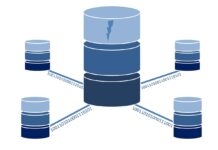
Extrusion is a manufacturing process that shapes materials, typically plastics, into continuous forms such as tubes, sheets, or profiles. At the core of this process is the extrusion extruder, a machine that uses heat, pressure, and mechanical force to transform raw materials into finished products. Here’s a closer look at how an extrusion extruder works, from feeding the raw material to finalizing the product.
Feeding Zone: Starting the Process
The process begins in the feeding zone, where raw materials such as plastic pellets or granules are introduced into the extruder. A hopper controls the steady flow of material into the machine, ensuring consistent feeding into the barrel. From there, the material is moved towards the screw, the key mechanical component that drives the extrusion process.
The Screw and Barrel: Melting the Material
The screw, housed inside the barrel, plays a central role in melting and mixing the raw plastic. It is divided into three main sections: the feeding zone, compression zone, and metering zone.
In the feeding zone, the plastic enters the barrel and is gradually compressed by the rotating screw, which starts generating heat.
In the compression zone, as the material moves through narrower channels, the plastic melts and is thoroughly mixed to ensure consistency.
In the metering zone, the final section, the molten plastic is prepared for extrusion, flowing at a controlled rate through the system.
The mechanical friction from the screw, combined with the heat from the barrel’s heating elements, ensures the plastic melts evenly.
Heating Elements: Temperature Control
Heating elements placed along the barrel play a crucial role in maintaining the right temperature throughout the process. Different plastics require different melting points, and controlling these temperatures ensures the material melts uniformly without defects. This temperature control is vital for producing high-quality extruded products and preventing thermal degradation.
The Die: Shaping the Material
Once the plastic has melted, it reaches the die, where it is shaped into the final product. The design of an extrusion extruder die dictates the shape of the extruded material, whether it’s a tube, sheet, or other profile. The molten plastic is forced through the die’s opening, forming the desired shape. Dies can be changed depending on the product being made, making this step highly customizable.
Cooling and Calibration: Solidifying the Shape
After the material is extruded through the die, it must cool quickly to retain its shape. Water baths or air-cooling systems are used to solidify the extruded product. For precision applications, calibration tools are used during cooling to ensure the product retains its precise dimensions without deforming.
Pullers and Cutters: Finalizing the Product
Once the product is cooled, pullers guide the material through the production line at a consistent speed. Cutters then slice the extruded material into the required lengths, or it may be coiled for storage. At this stage, the product is ready for use or further processing.
As we have seen, understanding how an extruder functions provides valuable insight into how various everyday products are manufactured efficiently.








